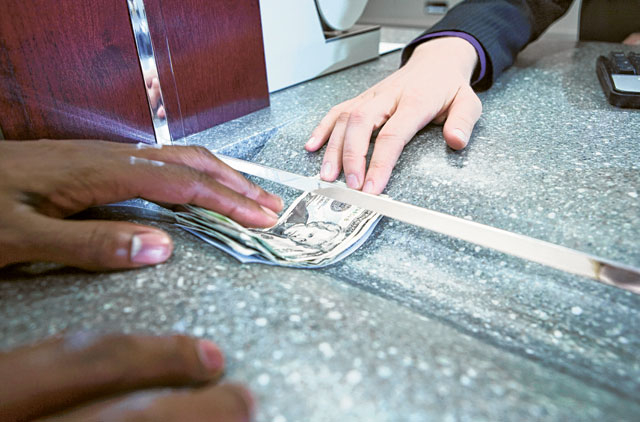Dubai: Banks are forecast to face tougher times ahead, as consumers are making less cash deposits, while business and government loans are slowing down amid lower oil prices.
The percentage of time deposits to the aggregate cash savings held by banking customers in the UAE has been on a decline in recent years, while non-consumption lending activity has been sluggish.
Money held in time deposit accounts accounted for 52 per cent of the total consumer savings in 2007.
By 2015, the figure dwindled to 28 per cent, indicating that people are either putting their money somewhere else or are strapped for cash.
“Real-time deposit rates have been negative in UAE since 2013, which discouraged people to save in time deposits,” Raghu Mandagolathur, senior vice president for research at Kuwait Financial Centre “Markaz” told Gulf News.
Raghu said a big factor discouraging people from keeping cash in the banks is the low interest rates.
“People in the UAE have shifted more towards short-term savings rather than having long-term deposits due to the changes in real deposit interest rates.” “Rates have been negative in UAE since 2013 which discouraged people to save in time deposits.”
At the same time, the pace at which loans are growing has also been lethargic, with banks now getting more prudent in lending to businesses amid poor corporate earnings, slower salary adjustments and employment cuts.
“In times of slow economic growth, corporate earnings would be poor and hence expansion activities will not be carried out by the businesses. Apart from these factors, banks would be more cautious in their lending, considering the slower wage growth and job losses. All these factors will lead to slower loan growth,” Raghu said.
Standard & Poor's had earlier forecast that UAE banks will see negative earnings growth this year and a lackluster performance in 2017.
"We are likely to see a gradual but longer deterioration in operating conditions for banks over the next several quarters or years," said Standard & Poor's credit analyst Timucin Engin.
The decline in loans growth however, doesn’t mean that UAE residents are borrowing less. According to the latest data, the amount of personal loans, including credit card and car loans, incurred by UAE residents had jumped by more than 7 per cent in the second quarter of 2016 compared to the same period last year.
Consumers may take up more loans for their own needs, but individual borrowings account for just 14 per cent of the loan book of UAE banks.
“Loan provided for business purposes and government loans accounted for 31 per cent and 14 per cent, respectively in the same period,” Raghu explained.
Besides, the net interest margins, as well as loan loss provisioning (LLP), aren’t very encouraging. “As per our estimates, net interest margins will compress by 600 basis points in 2016. LLP declined by 3 per cent in 2014, however, it increased by 3 per cent in 2015. We expect the trend to continue in 2016 and 2017,” said Raghu.
“LLP is forecast to increase by 6 per cent and 3 per cent in 2016 and 2017 respectively which could be one of the reasons for the decline in net income.”
In its latest report, Marmore said that higher exposure to the real estate and construction sector poses a threat to the banks in the UAE mainly due to the cyclical nature of the property market.
“We expect UAE banks’ profitability to slow down in the 2016 and 2017.Our expectations are underpinned by tightening liquidity and subdued credit off-take. UAE banks would maintain adequate capital and liquidity, while higher loan loss provisions will affect profitability.”














